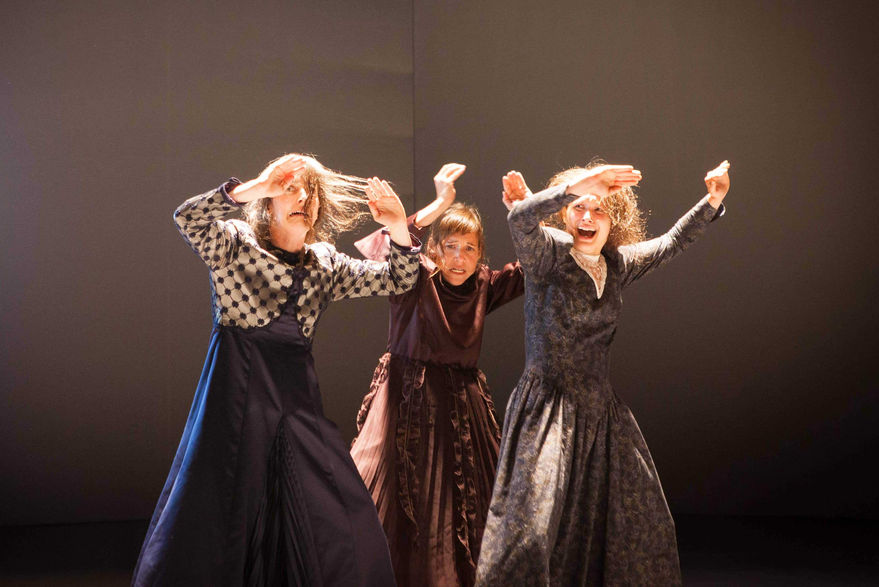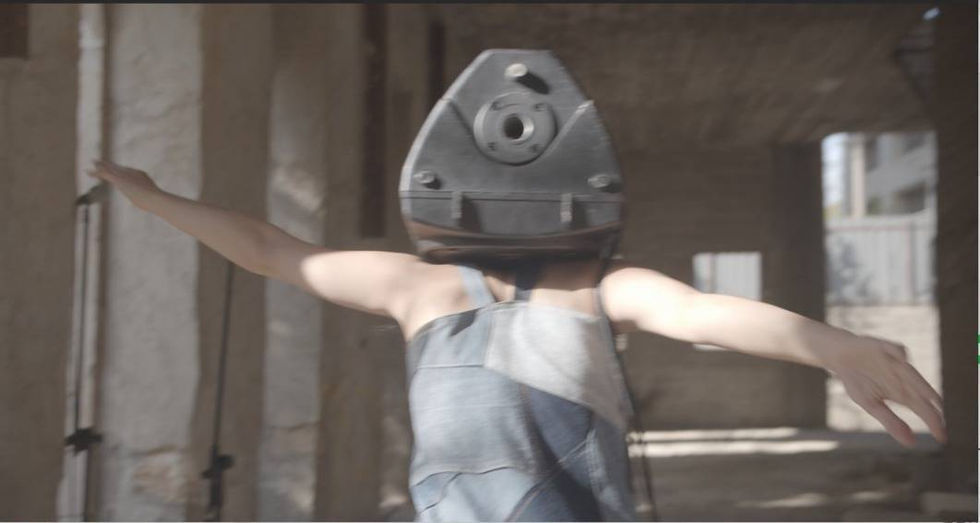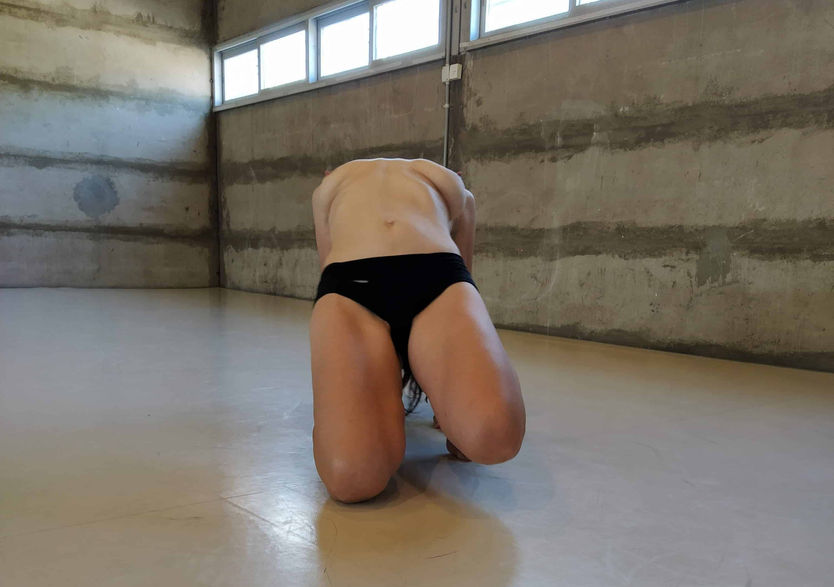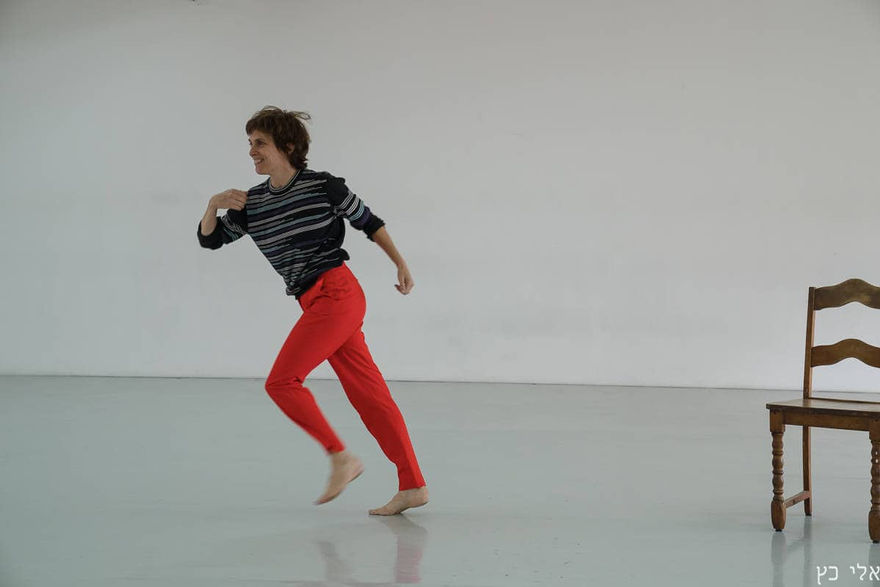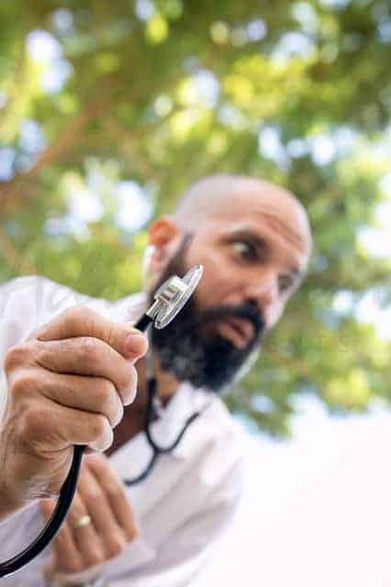
Archive
Festival Rabbit (2014–2021)

Festival Encounters

Research
Dramaturgy in Dance
A collaboration between Kelim Choreography Center and Hayot Machol (Dance Creatures)
Hayot Machol – Podcast on Contemporary Dance in Israel, Episode 34:
“Dramaturgy in Dance – Muscles of Observation and Listening” with Yael (Yali) Nativ and Iris Lana
Recorded live before an audience at Kelim – Body for Choreographic Work, Bat Yam.
Following the Dramaturgy Course held at Kelim in July–August 2023, this special episode was recorded with the participation of:
Yael Biagon-Citron – Director, dramaturg, and Artistic Director of Neve Schechter Center for Jewish Culture
Yael Venezia – Dramaturg, mentor, artistic advisor, and dancer
Yair Vardi – Theatre maker, Artistic Director of Midarom Festival for Multidisciplinary Arts, Ofakim, and lecturer at the Department of Culture, Creation and Production, Sapir Academic College
Natali Zuckerman – Independent artist, dramaturg, artistic director, and lecturer in theatre, dance, and performance - Hosted by: Yael (Yali) Nativ and Iris Lana
“Hayot Machol” (Dance Creatures) is a podcast about contemporary dance in Israel, hosted by Yali Nativ and Iris Lana.
The Israeli contemporary dance field is uniquely rich, complex, and deeply connected to local cultural, social, and political contexts, while maintaining strong ties to the international dance scene. The podcast creates an engaging and insightful dialogue about dance in Israel for a broad audience — artists, researchers, and students alike.
Some episodes are recorded in the studio, others in artists’ homes and studios, and some take a performative, live format with an audience present.
Live recordings: Udi Galinik, Salon Ben Dosa
Editing: Zohar Zaltz, Eshel Studios
Streaming: Omer Senesh

Book: “A Place for Action”

פואטיקות של ידע | רן בראון
בניסיון לקבוע נקודת התחלה למסע הזה, נברתי בדואר האלקטרוני שלי ומצאתי להפתעתי, שהתכתובת בין ענת וביני החלה בשלהי 2011. ענת כתבה לי במהלך שהותה בסיור בשוויץ, ואני הזמנתי אותה להופעת הבכורה של יצירת מחול שהשתתפתי בה כרקדן-יוצר באותה עת. אני מציין את הנסיבות הפרוזאיות הללו מפני שאני מוצא שהן מעידות על התהוותו של המפעל הזה מתוך העשייה עצמה, על יוזמה שהנצה בין הסטודיו לבמה, ולא (רק) בין הספרים. מראשיתו צמח החיבור הזה, בין תיאוריה ומעשה, מחוץ לאקדמיה, מתוך תחושת-בטן עמוקה שבעשייה הכוריאוגרפית טמון אוצר גדול, שראוי להפנות אליו מבט. ענת כתבה לי שהיא מבקשת "להתחיל תהליך של מחקר וניסוח של תהליכי עבודה כוריאוגרפים", והציעה שהכותבים יהיו יוצרי מחול, מורים-אורחים בכלים, לצד תיאורטיקן שילווה את הפרויקט, יערוך את החומרים השונים ויוסיף נקודת מבט תיאורטית. בבקשה הזו מובלעות שתי הנחות יסוד שראוי לתת עליהן את הדעת: האחת, ההנחה שתהליכי יצירה כוריאוגרפיים הם תהליכים שמפיקים בהם ידע, שאפשר לדבר עליהם במונחים של "מחקר". השנייה, שאפשר לנסח אותם, ולא סתם לנסח, אלא – כפי שביקשנו מכל הכותבים – כמודל יצירה. נתחיל מהנקודה הראשונה: הוויכוח על אמנות וידע הוא עתיק יומין – אפלטון למשל, הציג גישה ביקורתית כלפי שירה (ואמנות בכלל): לדידו, המשורים סבורים אמנם שהם חכמים ויודעים על מה הם סחים, אך למעשה אין הם מבינים דבר בנושאי שירתם. הבעיה העיקרית שלו איתם הייתה שיצירתם מתחברת מתוך השראה ולא על בסיס של ידע. כך, אופייה השקרי של השירה נובע מהתכנים שהיא עוסקת בהם אך גם ממאפיינה הצורניים, מן הייצוג האמנותי – אליו התייחס כאל מעשה שהשלכותיו מחלחלות לתוך הנפש ומשנות אותה בהדרגה, מעשה שפוגע במבצעים ובנמענים שלו, נקודה מעניינת מאוד שאחזור אליה בהמשך. על כל פנים, מעניין מאוד לציין שאפלטון לא דוחה את הייצוג האמנותי כליל, אלא רק את זה שנעשה בידי אמנים. לטענתו, פילוסופים דווקא כן יכולים לערוך ייצוג אמנותי. כלומר לא האמנות היא הבעיה אלא מי הוא הדובר. פילוסוף כן, אמן לא. אריסטו, שהיה תלמיד של אפלטון, דווקא חשב אחרת. גם הוא עסק, בין היתר, בייצוג האמנותי, במימזיס. עבורו, המימזיס אינו שעשוע, משחק או מנוחה שמקומם לאחר העיסוקים הרציניים של החיים; על פי אריסטו ההפך הוא הנכון, המימזיס לכשעצמו הוא חלק מהעיסוקים הרציניים של החיים. אריסטו מציג בהקשר זה מושג נוסף, רלוונטי מאוד לדיון שלנו: טכנה. המונח "טכנה" מציין את טווח היכולות האנושיות ליצור ולייצר דברים, בין שהתוצר נועד לשרת צרכים מעשיים ובין שהוא ידע טהור. אצל אריסטו המרכיבים המרכזיים של השירה: המימזיס מצד אחד, והטכנה מצד שני, קשורים קשר הדוק לפעילות הפילוסופית מעצם היותם ביטוי לממד התבוני של היצור האנושי השואף להרחיב את מעגל הידע שלו. "מקום לפעולה", ולמעשה המחקר כולו, נע בין ההכרה של אריסטו בפעילות האמנותית כפעילות המרחיבה את תחום הידע של האדם, ובין ערעור על ההסדרה של השיח, המאבק על רשות הדיבור, שחנך אפלטון. העיסוק במחול כתחום ידע מבקש לערער על הניגוד הבינארי שבין ידע לגוף, למחול או לתנועה. הגוף הרוקד הוא כבר תוצר של מחשבה, הוא רווי בה והיא מפעפעת בו, והוא גם הוגה ומבטא אותה. ההמשגה הזו – "מחול כתחום ידע" – אינה באה לגשר על ההפרדה הקרטזיאנית בין גוף ורוח, אלא יש בה דווקא להעיד על היותם בלתי נפרדים מלכתחילה, על העובדה שהעשייה הכוריאוגרפית כבר ספוגה במחשבה, רוויה בשיחים שונים, שהיא בה בעת תוצר שלהם ומכָל שלהם, ולא פחות – שיש לה פוטנציאל לייצר שיחים חדשים. וכאן אני מגיע אל ההנחה השנייה שהזכרתי: אל הבקשה לנסח מודלים של יצירה. מלכתחילה היה ברור לנו שמדובר כאן בסוג של אוקסימורון: אי אפשר לכלוא את תהליך היצירה במודל סגור, קבוע, ובוודאי שלא יחיד. ובכל זאת, ענת ואני הזמנו את רותם תש"ח, איריס ארז ונאוה פרנקל להוביל תהליך מחקרי מבוסס-מודל: כל אחד מהם התבקש לנסח (בכתב) את דרך עבודתו כמודל ליצירה כוריאוגרפית ולבחון את המודל שנוסח בסדנה מעשית בשיתוף עם יוצרים צעירים. בתום הסדנה התבקש כל אחד מן היוצרים לנסח מחדש את המודל בעקבות ההתנסות בו במסגרת הסדנה, לסכם את התהליך, ובמידת האפשר, גם להעלות תובנות ביחס לפרקטיקה שלו. ליאור אביצור הוזמנה לבחון מודלים כוריאוגרפיים קיימים, ובמהלך הזמן הסתבר לנו שהם לא כל כך קיימים, או לפחות לא מנוסחים כמודל, וליאור ניסחה מעין מטא-מודל כדי לחלץ מתוך גוף העבודה של יוצרים שונים מודל שמזקק את דרך המחשבה והעבודה שלהם. אבל מה ביקשנו להשיג? אולי יהיה קל יותר להסביר זאת על דרך השלילה: לא יצאנו לדרך עם השערת מחקר שאותה ביקשנו להוכיח; לא ביקשנו את האמנים לנפק תוצר אמנותי בתום הסדנה שהעבירו; לא ביקשנו להעמיד מודל שלאורו יש ליצור/לראות/לחקור מחול עכשווי. ביקשנו להתבונן. להעלות שאלות. לאפשר את הופעתם של חיבורים חדשים, מחשבות חדשות, ידע חדש. האין זו מטרתו של מחקר? ז'אק רנסייר תופס באופן דומה את האמנות היום – כדחיית גבולות בין דיסציפלינות וטשטוש ההיררכיה בין רמות השיח, ובעיקר, בהעדר מטא-שיח מתאים להמשגת התופעה – המצאת צורה חדשה – אידיום שבו יסופר הסיפור, וייעשה אפשרי לתרגום על ידי הצופים המשוחררים. תפיסות כמו זו של רנסייר ואחרים נידונו בקבוצת הקריאה, שהייתה הערוץ השלישי בתכנית המחקר. קבוצת הקריאה בהנחייתי שימשה כמסגרת לעיסוק מפורש במחול כתחום ידע, ולא (רק) כאמנות גוף ותנועה, ללא מילים ומחשבה. אולם, גם כאן, העיקר לא היה גוף הידע שהוצע במפגשים שקיימנו, אלא היכולת לחשוב באופן תיאורטי על העשייה הכוריאוגרפית ולנקוט עמדה מנומקת כלפיה. ברוח זו, כל המאמרים המופיעים באסופה מתעדים שוטטות פעילה בין התיאוריה למעשה ומבקשים להציע התבוננות הגותית-ביקורתית, תוך דחייה של גבולות דיסציפלינאריים מוכתבים מראש, על מנת לאפשר לכותבים ולקוראים גם יחד את הופעתו של ידע חדש. בנקודה הזו אני מבקש לשוב אל השפעתו המזיקה של הייצוג האמנותי אליבא דה אפלטון, אותו מעשה שהשלכותיו מחלחלות לתוך הנפש ומשנות אותה בהדרגה, מעשה שפוגע במבצעים ובנמענים שלו. הטענה הזו של אפלטון מהדהדת בדבריו של חוקר המחול אנדרה לפקי, שטוען כי משימתה של הכוריאוגרפיה היא "חשיבה מחדש של הסובייקט במונחי הגוף". לפקי מבקש להבין את הסובייקטיביות ככוח פרפורמטיבי, כתהליך של סובייקטיפיקציה, כהיעשות פעילה. חשיבה מחדש של הסובייקט במונחי הגוף, פירושה להבין גם את הגוף, לא "כיישות בלתי תלויה וסגורה, אלא כמערכת פתוחה ודינמית של חילופין, המפיקה ללא הרף דרכים לשעבוד ולשליטה, כמו גם להתנגדות ולהיעשות". אותה "חשיבה מחדש של הסובייקט במונחי הגוף" נעשית על ידי ארז, פרנקל ותש"ח: רותם תש"ח מציג את האופן שבו מתרחשת הבנייה חברתית של הסובייקט באמצעות הגוף תוך ניתוח פרקטיקות גופניות רווחות בגישה היסטורית-ביקורתית, איריס ארז חושפת את הממדים הפסיכו-פיזיים המכוננים את הסובייקט ומעלה שאלות לגבי טבעו המשתנה תדיר, הבלתי-קבוע, ונאוה פרנקל מנכיחה את חמריותו הלשונית של הגוף ואת תלותה של הסובייקטיביות בשפה. פעולות אלו מתרחשות בעת חיבור היצירה, ומתרחשות בשנית כאשר מול יצירתם ניצב קהל פעיל שנענה לקריאתם לבחון מחדש את הידוע והמוכר ולכונן את עצמם כסובייקטים מול אותה קריאה. הפעולה הכפולה הזו, שהיא בעלת השלכות הן על המבצעים והן על הצופים, היא מה שחוקר הספרות ז'ראר ז'נה מכנה פואטיקה – כזו שמתייחסת לא רק ליוצרים שמחברים כוריאוגרפיה, אלא גם לצופים: לפי ז'נה האמנות נוצרת מהמפגש בין כוונה ותשומת לב, היא פרקטיקה עבור כולם – כלומר לא רק עבור האמן, אלא גם עבור הצופה. מהאופן שבו מתארים שלושת היוצרים את פרקטיקת החיבור של עבודות הבמה שלהם – כלומר את הפואטיקה שלהם – עולה כי משותפת לשלושתם התפיסה כי הפרקטיקה האמנותית שלהם טומנת בחובה גם עבודה אפיסטמולוגית – קרי ערעור על האופנים שבהם מובנה ידע, וייצור של ידע חדש באמצעות הפרוייקט האמנותי. היא מתרחשת במהלך החיבור של המופע הבימתי (התהליך), אך מאפיינת גם את האופן שבו פועל המופע הבימתי באמצעות המבצעים והצופים. זוהי פואטיקה של ידע.

Reading Group | Facilitated by Ran Brown

Between 2015–2016 and again in 2018, a Reading Group facilitated by Ran Brown was held at Kelim Choreography Center.
The group emerged in response to the growing body of publications on contemporary dance, which testify that choreographic practice is deeply infused with theoretical reflection, saturated with diverse discourses, and—perhaps most importantly—possesses the potential to generate new modes of discourse.
The Reading Group focused on a shared exploration of theoretical texts, aiming to expose these underlying conversations and bring them to the surface. It was founded on the belief that this act of collective inquiry holds a liberating and empowering dimension for dance creators.
Another central goal was to provide a space for choreographers to read together, fostering accessibility to contemporary discourse on dance while maintaining an ongoing dialogue with other academic and artistic fields.

Workshops

EXCHANGE Series
Between 2021–2023, Kelim Choreography Center hosted the EXCHANGE Series, an initiative by Ayelet Frankel.
The series created a space for in-depth encounters between choreographers and dancers. Each session included a professional workshop, a studio performance, and an open conversation with the audience. The participating choreographers were selected in collaboration with the Independent Dancers’ Community.
The EXCHANGE Project was conceived to foster a mutual, open, and generative environment for sharing choreographic thought, practice, and process.
Kelim is committed to initiating new encounters and introducing new voices into the dance community, while also strengthening and deepening existing networks. Expanding these relationships serves to provide artistic, communal, and production support for the development of ideas, practices, and creative processes.
Within the workshop space, choreographers were invited to share elements of their creative research and development, while dancers were encouraged to observe, respond, and take part in the process. The studio performance offered a shared opportunity to reflect on the choreographer’s artistic exploration, followed by an open discussion that allowed all participants to summarize the experience and contribute new, stimulating perspectives.
Participating Choreographers:
Iris Erez, Niv Sheinfeld & Oren Laor, Ofir Yudilevitch, Ori Shafir, Noa Zuk, Hillel Kogan, Arkadi Zaides, Anat Danieli, Sigal Bergman, Mor Shani, and Yair Vardi.
Discussions were mostly facilitated by: Dr. Idit Suslik.

Education
Project Na‘ara (Girl Project)
Between 2021–2023, Kelim Choreography Center ran the Girl Project, an artistic and educational initiative in collaboration with groups of teenage girls from the city of Bat Yam.
The project focused on contemporary feminist art and aimed to give participants a sense of empowerment and belonging through shared creative processes exploring gender identity and self-expression.
Two groups took part in the project:
-
Performance and Feminist Practice Group — held in collaboration with Ya’ad High School and led by interdisciplinary artist Rotem Volk.
Throughout the sessions, Rotem introduced participants (ages 14–16) to diverse practices from the world of performance and stage arts, emphasizing creative, uninhibited self-expression in both studio and public space. The girls were exposed to inspiring women artists and worked with voice, movement, writing, improvisation, and materials, objects, and costumes.
-
Hip-Hop Creation Group — held in collaboration with Dance It Studio, directed by Shani Mahlab (Bat Yam).
The participants created personal hip-hop choreographies under the theme of “Addictions”, exploring self-expression and creative authorship within an urban dance framework.
The Girl Project was initiated and produced by Kelim Choreography Center in partnership with Ya’ad High School, Kinneret Community Center, and Dance It Studio, with the support of ICA – Israeli Center on Addictions.
Gravity Force Program & the Performance “Teach Me a Flip” // Ofir Yudilevitch
The Gravity Force Program is a unique initiative that uses choreographic and movement-based tools as means for personal growth and empowerment for at-risk youth.
Gravity, one of the strongest and most fundamental forces in nature, acts equally upon all bodies and objects. It shapes not only our physical reality but also the language and metaphors we invent — up and down, lightness and heaviness, high and low art, passivity and action. Gravity is indifferent to whether we land or crash. In this project, participants take a moment to play with gravity — to become pure mass and to surrender to its neutrality.
During the sessions, students engage in physical exercises drawn from parkour, capoeira, acrobatics, and dance, alongside choreographic and abstract composition tasks. The process is experiential and physically challenging, inviting creativity, active participation, and mutual reflection within a flexible, nonjudgmental environment.
Between 2018–2019, the program took place at Ya’ad High School in Bat Yam. Its final presentation, the performance “Teach Me a Flip”, premiered as part of the Festival Rabbit March 2019.
Concept and facilitation: Ofir Yudilevitch
Youth Workshop: “Body Finds a Place” // Willi Dorner
As part of Austrian choreographer Willi Dorner’s visit to Israel in February 2017, a workshop was held at Ben Gurion Elementary School in Bat Yam.
The workshop included a scaled version of Dorner’s internationally renowned project “Bodies in Urban Spaces”, featuring 30 participating students.
The entire process was documented photographically, and the resulting images were later displayed as a permanent exhibition at the school.
Choreography Workshops for Educators
(For teachers and kindergarten staff without prior dance background)
Between 2016–2018, Kelim hosted a series of choreography workshops for educators.
The workshops invited teachers to explore their own educational and creative practices through choreographic thinking and experimentation.
Participants engaged in exercises drawn from dance composition, focusing on everyday movement, gesture, and spatial awareness — examining how movement can inspire creative and collaborative thought.
Activities included mapping and tracing movement paths in classrooms and courtyards, exploring interpersonal and group dynamics through nonverbal communication, and creating movement-based systems that encourage cooperation and imagination.
Professional Development for Dance and Theatre Teachers
In collaboration with the Israeli Ministry of Education – Arts Department (Dance Division), Kelim organized a professional development seminar on the body in public space.
The program combined theoretical and practical workshops aimed at developing pedagogical tools for artistic and community-based work within schools and local cultural environments.
Topics included: choreography in public space, site-specific art, the relationship between art, artists, and community, and the dynamics between performer, stage, and audience.
Facilitators: Natali Zuckerman, Dafna Krohn, Meir Tati, Inbal Oshman, Dana Yahalomi, Dana Ruttenberg, Dr. Rina Badosh.
The training took place at Kelim Choreography Center.
מרכז כלים יזם תכנית לתלמידי בית הספר היסודי בן גוריון בעיר בת ים. השנה, מגיעים למרכז כלים תלמידי כיתה ה', אחת לשבוע לשיעור תנועה וכוריאוגרפיה כחלק ממערכת השעות הבית ספרית.
במהלך שלושת החודשים הקרובים נעבוד עם טקסט ספרותי ודרכו נתנסה בתיאור מילולי של תנועה, מהו משפט תנועתי לעומת משפט טקסטואלי, אלתור תנועתי בהשראת הטקסט, דימוי תנועתי מהו וכן, ועל השאלה האם התנועה יכולה להפעיל אתונו לכתיבה.
Choreography Workshops for Elementary School Students // Tal Grabinsky-Amishi
Kelim initiated a year-long educational program with Ben Gurion Elementary School in Bat Yam.
Each week, fifth-grade students participated in a choreography and movement class integrated into their regular curriculum.
Through work with literary texts, the children explored the relationship between movement and language, distinguishing between textual and movement-based “sentences,” experimenting with movement improvisation, and discovering how dance can inspire writing.
Initiated and led by: Tal Grabinsky-Amishi, in collaboration with Hagit Izek and Ayla Keinan.

Resident Artists





































































